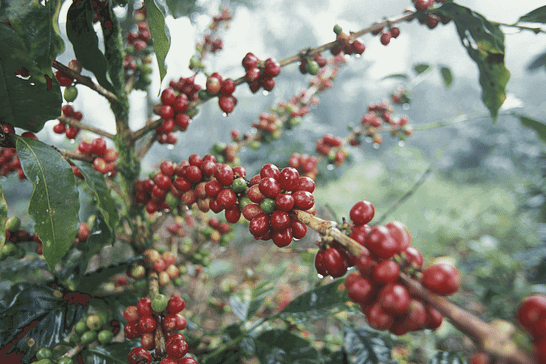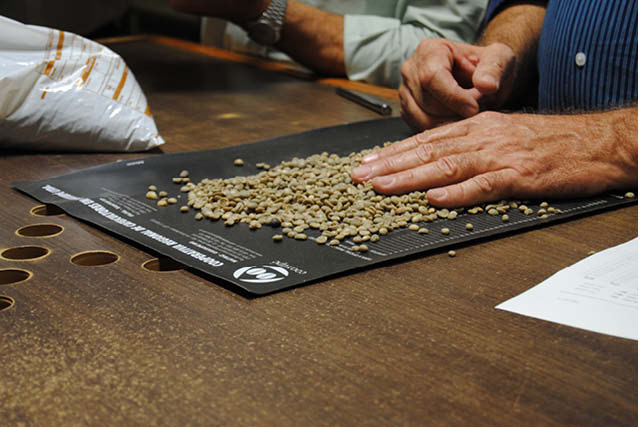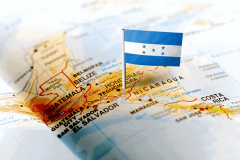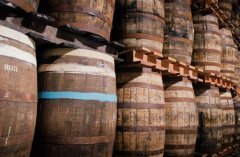The History of Coffee in Honduras an introduction to the Flavor of Godfather Coffee in Manor Molaud, Honduras
Although you may have heard of coffee such as Brazil and Colombia, there are many other coffee producing countries (such as Honduras) that are worth a try. In fact, Starbucks often features Honduran coffee and has helped it reach new heights in recent years.
Honduran coffee comes from Honduras, a country in Central America with a warm climate and diverse landscapes. The coffee produced here comes in a variety of flavors, from fruity to chocolate.
In the past few years, Honduran coffee has become more and more followers and become more and more common. You can find various Honduran brands in most grocery stores and have more choices in specialty stores.
Honduras
Honduras is a coffee-producing country in South America with 280000 hectares of coffee plantations. At present, about 565 million coffee trees are planted in the country, more than 95 per cent of which are planted on small farms. More than 120000 households are involved in coffee production, but most coffee plantations are less than 3.5 hectares, of which 70 per cent have a land area of less than 2 hectares. Smallholder coffee production accounts for more than 60% of coffee production in Honduras. Central farms account for about 3%, and large farms account for about 2%.
Since 2007, under the leadership of the IHCAFE Coffee Committee, Honduras has been improving its coffee growing environment and coffee bean processing facilities and improving the efficiency of its coffee export port. In terms of coffee production alone, Honduran coffee was already well-known in Central America in 2011-2012, harvesting about 3 million bags of coffee a year.

Before we enter Honduran coffee today, we will discuss how it is formed. Coffee cultivation had a significant impact on the country and actually helped to increase its income; Honduras had experienced some difficult times in the past.
Since 2009, during a political coup, the country has faced bankruptcy and financial instability. However, their excellent coffee crop is an important part of recovering from this problem. Growing coffee enables them to create jobs and earn the money they desperately need.
The coffee trade in Honduras began in the 18th century, when traders brought coffee to the region. In the 19th century, some farmers all over the country began to grow crops, but they were not rich enough. In the late 20th century, however, the crop really began to take off.
The booming coffee industry was hit hard in 1998 when Hurricane Mitch destroyed the country and wreaked havoc. At this time, most of the country's agriculture was damaged, including the newly popular coffee crop.
However, after some farmers began to bring their products to Guatemala to sell at higher prices, the coffee industry in Honduras has since resurfaced and grown rapidly.
Next, Qianjie will introduce the coffee beans from Violet Malaud Manor in Honduras. If you are a coffee lover, you will love this coffee.

Region: Lempira area Padrino MorodManor
Classification: SHG
Variety: Katuai
Altitude. 1600m
The processing process. Oak barrel fermentation
Taste: rum, melon, oolong, vanilla
Morod Manor
Morod Manor is located in Lompila, a sub-region of Honduras, where the main variety of coffee is Arabica, a dwarf plant that can grow up to 3 feet tall and is easy to pick by hand. The acidic soil and warm environment of the area enable the farm to produce uniform-sized coffee beans and extract coffee smoothly.
Important Notice :
前街咖啡 FrontStreet Coffee has moved to new addredd:
FrontStreet Coffee Address: 315,Donghua East Road,GuangZhou
Tel:020 38364473
- Prev

Six major coffee producing areas in Honduras introduce the difference of flavor between Shirley and Litchi orchid coffee beans in Moca Manor.
There are six main coffee-growing areas in Honduras: Copan, Opalaka, Montesiros, Comayagua, El Paleso and Agarta. Copan is the most famous growing area in Honduras. They produce sweet coffee at an altitude of 3300 to 5000 feet, with citrus, chocolate and caramel flavors. Their coffee is better than that in some other growing areas.
- Next

Flavor characteristics of Honduran Molod Violet Coffee introduction to Coffee Bean by barrel treatment
There are always people who will be surprised by the taste of the wine in the coffee bean flavor, jumping off and delicious. How do you do that? In fact, this is a popular coffee treatment in recent years, with fresh raw coffee placed in buckets formerly used to make whisky, gin, rum, wine and other varieties of wine. Out of curiosity or convenience
Related
- Detailed explanation of Jadeite planting Land in Panamanian Jadeite Manor introduction to the grading system of Jadeite competitive bidding, Red bid, Green bid and Rose Summer
- Story of Coffee planting in Brenka region of Costa Rica Stonehenge Manor anaerobic heavy honey treatment of flavor mouth
- What's on the barrel of Blue Mountain Coffee beans?
- Can American coffee also pull flowers? How to use hot American style to pull out a good-looking pattern?
- Can you make a cold extract with coffee beans? What is the right proportion for cold-extracted coffee formula?
- Indonesian PWN Gold Mandrine Coffee Origin Features Flavor How to Chong? Mandolin coffee is American.
- A brief introduction to the flavor characteristics of Brazilian yellow bourbon coffee beans
- What is the effect of different water quality on the flavor of cold-extracted coffee? What kind of water is best for brewing coffee?
- Why do you think of Rose Summer whenever you mention Panamanian coffee?
- Introduction to the characteristics of authentic blue mountain coffee bean producing areas? What is the CIB Coffee Authority in Jamaica?

